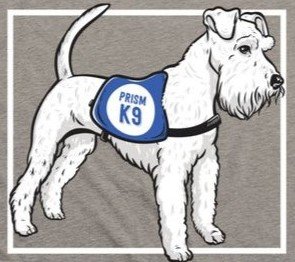Unlocking Your Dog's Inner Hunter: Simulating the Canine Hunting Sequence for Enrichment
Dogs are natural hunters at heart, with instincts honed over millennia. While our canine companions may not need to hunt for their meals anymore, tapping into their innate hunting sequence can provide mental and physical enrichment, reduce boredom, and strengthen the bond between you and your furry friend. In this article, we'll explore the canine hunting sequence and offer creative ways to simulate it through play.
Understanding the Canine Hunting Sequence:
Before delving into the ways to simulate the hunting sequence, it's essential to understand the key stages involved:
Search:
Dogs begin by searching for their prey. This stage is characterized by curiosity, sniffing, and scanning the environment for potential targets.
Stalk:
Once they detect a scent or spot prey, dogs enter the stalking phase. They move quietly, with their body low to the ground, focusing intently on the target.
Chase:
The chase phase involves pursuit. Dogs will sprint and zigzag in an attempt to catch their prey, exhibiting their agility and speed.
Grab and Shake:
After successfully catching prey, dogs often grab it with their mouths and vigorously shake it to incapacitate or kill it.
Consumption (dissect):
In the final stage, dogs consume their prey.
Simulating the Canine Hunting Sequence in Play:
Now that we understand the stages, let's explore ways to simulate this sequence in play to provide mental and physical stimulation for your dog.
Hide-and-Seek: This game satisfies the search and stalk phases. Hide a favorite toy or treat around your home or yard, and encourage your dog to find it using their sense of smell. Begin by just tossing it slightly away, and gradually increase the complexity of hiding spots to challenge them.
Fetch and Chase: Use a ball or a toy that your dog loves to fetch. Throw it and encourage your dog to chase, mimicking the chase phase. Engaging in a game of fetch provides physical exercise and taps into their hunting instincts. We love to play this game with plush toys as much as we play it with balls.
Tug-of-War: A classic game of tug-of-war can mimic the grab and shake phase. Use a sturdy rope toy, and engage in a friendly tugging match with your dog. Ensure you follow appropriate rules and allow your dog to win frequently to keep it enjoyable. Be sure your dog does not struggle with aggression issues before playing this game.
Interactive Feeding Toys: Invest in puzzle feeders or treat-dispensing toys. These toys encourage your dog to work for their food, simulating the dissection and consumption phase of hunting.
Scent Work: Engage your dog's remarkable sense of smell by setting up scent trails for them to follow. You can use treats or specific scents designed for scent work. Start simple and gradually increase the complexity of the trails.
Agility and Obstacle Courses: Set up a mini obstacle course in your yard or living space. Encourage your dog to navigate through tunnels, jump over obstacles, and weave through poles. This activity incorporates elements of the chase phase. Begin with simple introduction to each activity before incorporating them into a game.
Training Games: Incorporate obedience training into play sessions. Commands like "stay" and "wait" simulate the stalking phase, teaching your dog impulse control and patience. Learns tricks, such as roll over, play dead, and shake, are great brain work for your dog.
Safety First:
When simulating the hunting sequence, safety should always be a priority. Ensure that toys and play areas are dog-friendly and free from hazards. Monitor your dog's enthusiasm and energy levels to prevent overexertion. Never initiate the hunting sequence with a dog who your don’t explicitly trust.
Conclusion:
By understanding and simulating the canine hunting sequence, you can provide your dog with mental and physical enrichment, reduce boredom, and strengthen your bond. These playful activities tap into your dog's natural instincts, satisfying their primal urge to hunt and making playtime an exciting and rewarding experience for both of you.
“This is a quote.”
Be clear, be confident and don’t overthink it. The beauty of your story is that it’s going to continue to evolve and your site can evolve with it. Your goal should be to make it feel right for right now. Later will take care of itself. It always does.

